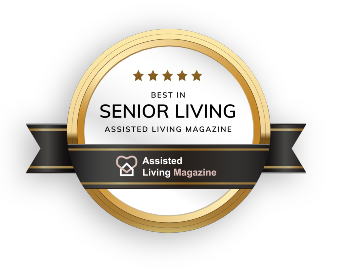|
The Mapleton is proud to have recently been featured in Assisted Living Magazine, driving home our dedication to exceptional care.
With a legacy rooted in a commitment to the local community, ownership and staff have tirelessly championed quality care for years. Our ongoing commitment to resident well-being and comfort has made The Mapleton an exceptional and very affordable option for the local Andover community that we know and love. For those seeking further insight into pricing, floor plans, or care options, please call or download our brochure. Choosing an assisted living facility is a major decision that can impact your quality of life and well-being. One of the key factors to consider is the size of the facility. Some seniors prefer the amenities and social opportunities of a larger facility, while others prefer the intimacy and personalized care of a smaller one. In this article, we will discuss the pros and cons of choosing a large vs. small assisted living facility to help you make an informed decision.
Pros and Cons of Large Assisted Living Facilities: Large assisted living facilities typically have more amenities and social opportunities than smaller ones, such as:
However, large facilities also have some potential drawbacks, such as:
Assisted living facilities provide a supportive living environment for seniors who need assistance with activities of daily living (ADLs). However, the transition to assisted living can be challenging, as seniors may feel like they are losing their independence and autonomy. At The Mapleton Assisted Living in Andover, Kansas, we understand the importance of maintaining seniors' dignity and self-respect while providing the care and support they need. In this article, we will discuss the challenges seniors may face in maintaining their dignity in assisted living and provide tips and strategies for helping them feel empowered, respected, and valued.
Challenges Seniors Face in Maintaining Their Dignity: Seniors may face various challenges in maintaining their dignity while living in assisted living, including:
Introduction: Moving into an assisted living facility can be a significant life transition, both for the seniors and their families. While it may come with a mix of emotions, it's essential to have a clear understanding of what to expect to make the transition as smooth as possible. In this comprehensive guide, we will explore what you can expect when moving into an assisted living facility, including the benefits of assisted living, the admissions process, the services and amenities offered, and tips for adjusting to your new home.
|
Archives
May 2024
Categories |







 RSS Feed
RSS Feed

